Top 10 Cheapest Places In The World To Live Comfortably
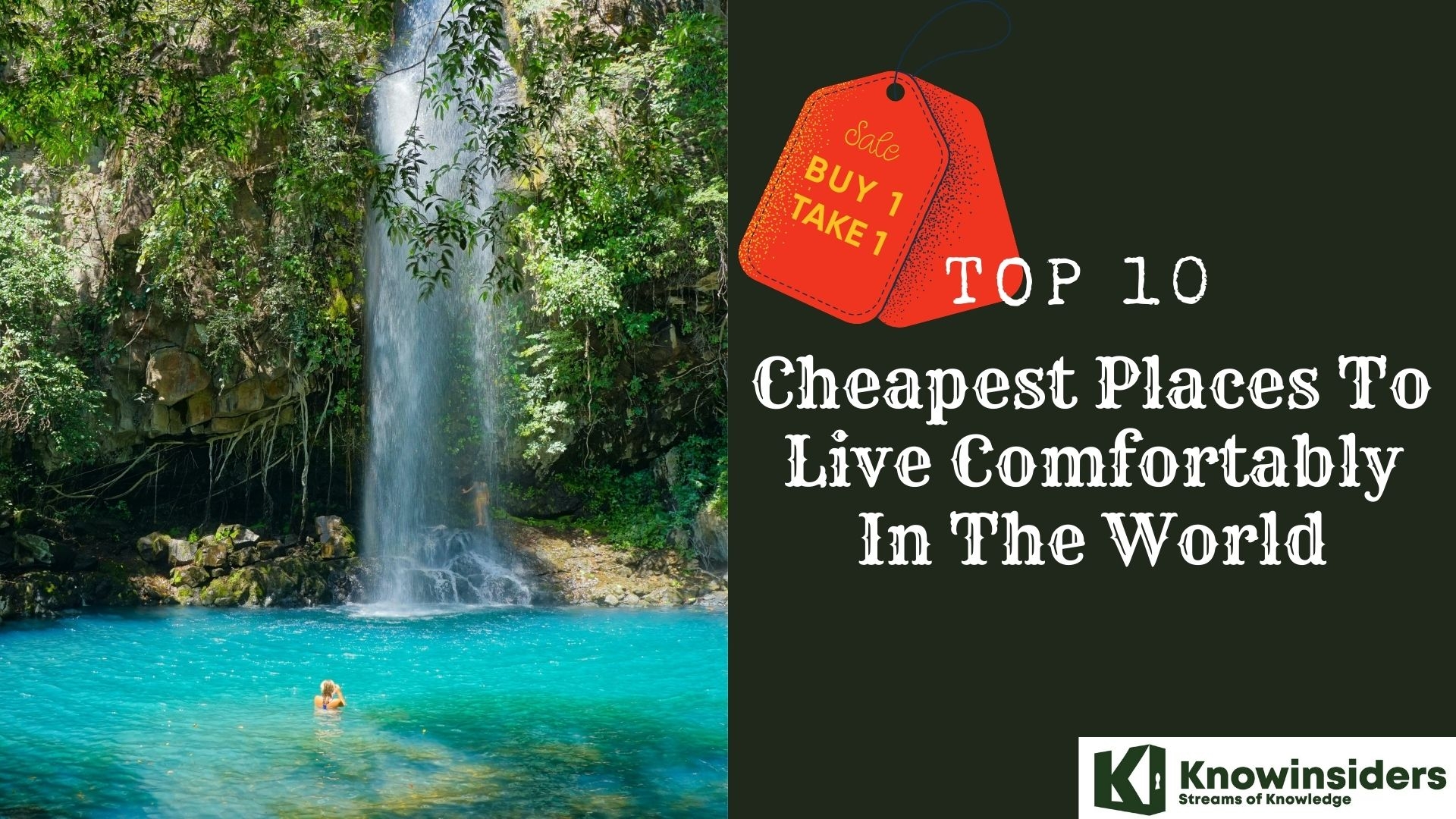 |
| Top 10 Cheapest Places To Live Comfortably In The World |
Money can’t buy happiness, but the relative affordability of a city sure does have a big impact on wellbeing.
The costs of living in New York City and San Francisco in 2022 are well known: Tiny apartments for giant rents, expensive yet dirty public transit, laughably-priced food and entertainment affordable only for those with money to burn. In fact, the average rent in Manhattan just hit an all-time record of $3,700 this month.
So looking to live somewhere that isn’t so exorbitantly costly?
These locales, both foreign and domestic, are the cheapest place to live in the US, the cheapest places to live in the world and the cheapest places to retire.
Here are the top 10 cheapest places to enjoy your life in the world.
List of Top 10 Cheapest Places To Live Comfortably In The World
1. Vietnam
2. Bolivia
3. Bali
4. Manchester
5. Wichita
6. Cambodia
7. Portugal
8. Malaysia
9. Costa Rica
10. Ecuador
What are the cheapest places to live comfortably in the world?
1. Vietnam
 |
| Photo: Timeout |
For individuals looking to live where their buck goes the furthest, the publication International Living crunched the numbers for their Annual Global Retirement Index and has the answer: The most economical ex-pat destination in 2022 is Vietnam.
“Expat couples can enjoy the benefits of living in modern, comfortably furnished homes and apartments in good neighborhoods, eat meals out regularly, have a housekeeper, and indulge in plenty of travel and extras, all on a budget that will probably never exceed $1,500 per month,” International Living reported earlier this year.
The nation has seen rents drop by nearly 50 percent in certain parts of the country during the last year, luxury-grade one-bedrooms can currently be rented for just $300 a month and groceries are also noted for being priced extremely low, the outlet added.
Vietnam is an inexpensive country to live in. Most items cost less than half of what you would pay in the West, and anywhere from 5% to 25% less than what they would cost in many other Southeast Asian countries.
Vietnam’s most expensive city is Ho Chi Minh City, followed by Hanoi. Even in these two places, a couple can enjoy a comfortable, middle-class lifestyle for less than $1,300 per month. Many Westerners who live in Hanoi and Ho Chi Minh City get by spending around $500 per month, but it’s a no-frills lifestyle. A monthly budget of around $4,000 provides for top-end luxury, including a large, furnished home with a view of a lake or park, eating at 5-star restaurants, and taking frequent cruises and sightseeing trips throughout Vietnam.
If you live outside of Vietnam’s two largest cities, in places like Da Nang, Hoi An, Nha Trang, and Vung Tau, prices will be much less. In any of these destinations, a budget of around $800 to $1,100 per month will provide a lovely house or apartment, all utilities, housekeeping, groceries, dining out every day if you choose, and even the occasional massage. In all of these towns, you can find a place to live just a short walk from the beach, or even a home with an ocean view. If you can manage a budget of $3,500 to $4,500 per month, you can rent a modern villa with a private pool and live like royalty while eating and drinking at the best restaurants in town.
Of course, your lifestyle will determine how much you really need to spend. Western restaurants and imported food stores are easily found throughout Vietnam, but go to them often and you’ll be adding considerable expenses to your budget. If you are willing to buy locally produced groceries and household goods, eat and drink at restaurants where the locals go, and live a relatively simple lifestyle, you can reduce your monthly budget by at least 25%. Two people can enjoy a full local-style meal of rice or noodles, meat, vegetables, and a couple of draft beers for less than $5. For comparison, ordering one deluxe hamburger, fries, and a bottle of imported beer at a Western-style restaurant will cost between $8 and $11.
A cleaning lady will cost $2 or $3 an hour, and a full-time, live-in maid will charge around $125 per month. A pre-paid cell phone plan with unlimited data is about $3 per month, high-speed fiber-optic internet is around $11 per month, and cable TV is just $7 per month. If you are living in an area where you’ll need to use either an air conditioner or a heater some of the time, your electric bill will run between $75 and $100 per month for a two-bedroom house or apartment.
Medications that would require a doctor’s visit and a prescription in the West can be purchased over the counter in Vietnam at a small fraction of the price.
2. Bolivia
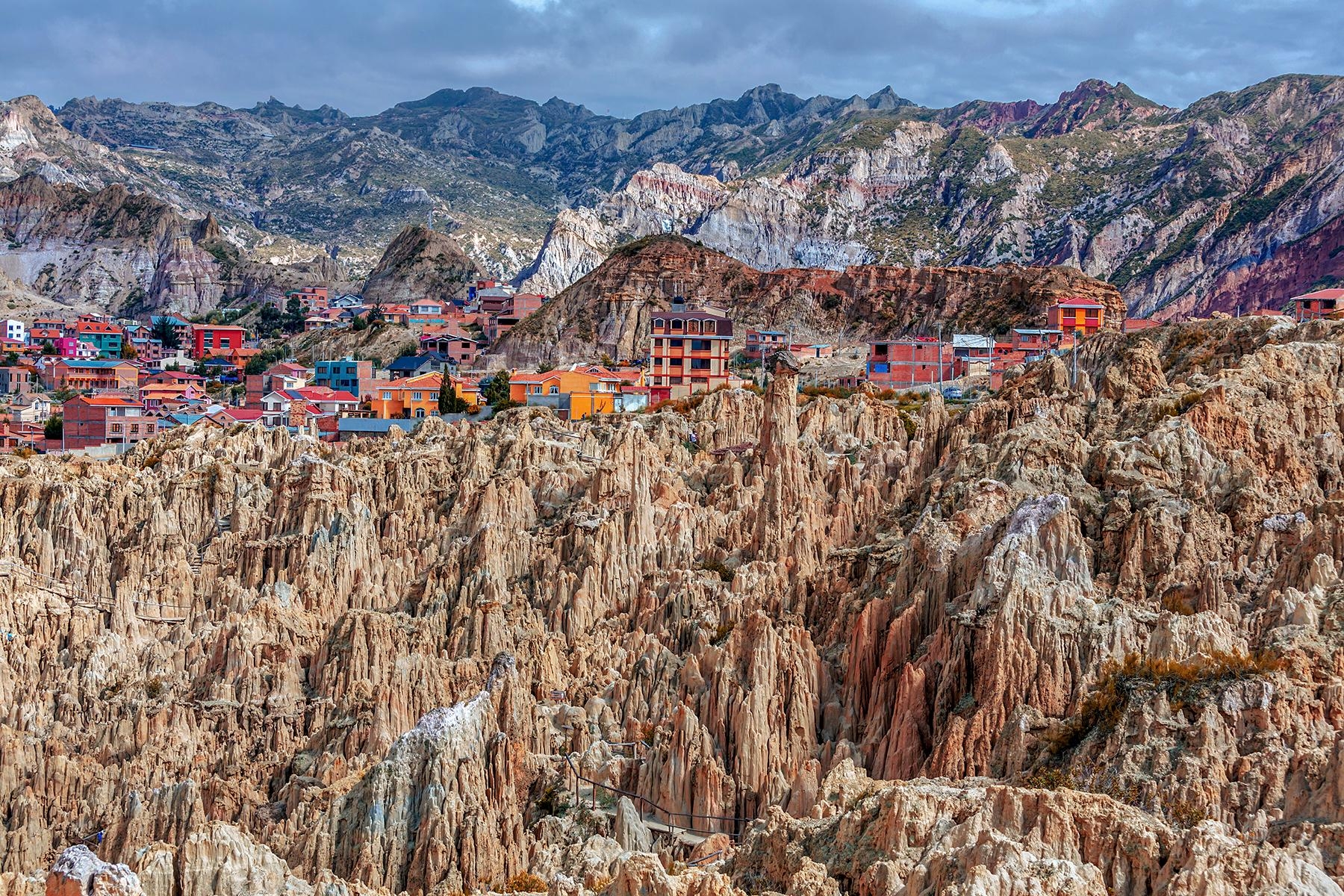 |
| Photo: Getty Images |
Bolivia came in second (tying with Bali).
The nation, known for its Amazon region and the Andes Mountains, isn’t among the more popular South American tourist destinations, which helps keep costs down for locals. Rents start at just $200 for quality apartments in decent, central neighborhoods, and both food and transit are also jaw-droppingly cheap by New Yorkers’ standards: Lattes will run drinkers 75 cents, and couples looking to splurge on a nice sit-down meal can anticipate a bill in the $30 total range, International Living reported.
A short taxi ride is often no more than $1.50, and flying across Bolivia costs only $45 or so. Medical care, groceries, and hired hands — including a gardener or maid — are also all rather shockingly reasonably priced.
People from around the world are quickly discovering Bolivia. Many come for the culture, where 36 different indigenous groups inhabit the country. Geographical wonders abound too, including the eerily reflective Uyuni Salt Flats, challenging mountaineering routes, and the lush Amazon Basin. But a rapidly growing number of folks are choosing to do more than play tourist in this Andean nation—they’re choosing to stay for good.
Bolivia is attractive to newcomers on many fronts thanks to the warmth of its people, the perfectly moderate climate in the highlands, and its variety of natives who call the country home. Residents can choose to live in the high altiplano of the Andes Mountains or on the edge of the low altitude rainforest. Old colonial cities rich with history dot the landscape between these two extremes.
The icing on the cake for these international residents is that Bolivia also comes with an affordable cost of living. One-way airline tickets between cities can be had for as little as $27 and a nice bottle of locally produced table wine costs less than $3. Taxi rides are available starting at 75 cents and a family-sized platter heaped with various grilled meats (plus salad bar access) is just $12.
The southern Bolivian city of Tarija is surrounded by wine country and idyllic small farms. The city itself has a small-town flair where locals visit their neighborhood supermarkets daily and spend hours chatting with friends under the shade of broad-canopied trees. No one is in a rush here and life moves at a charmingly relaxed pace.
It’s here where U.S. expat Nathan Salveson is living a comfortable life on well under $1,000 a month. His one-bedroom apartment in a safe central neighborhood comes furnished and includes all his utilities and cable television. For this he pays $200 a month. When it comes to food Nathan admits that he likes healthy and tasty food options, so is willing to pay more for quality meals. Still, his total food budget for a month comes in at around $220.
Steve Nagy has migrated from Florida to Bolivia’s breathtaking colonial city of Sucre. He, like Nathan, is renting a one-bedroom apartment which includes all utilities and cable television. But Steve’s home is set right on the edge of the city’s historic district with its grand colonial-era structures, centuries-old churches, and meticulously maintained plazas. He pays less than $300 per month for his place and as a bonus gets internet and weekly maid service included.
A couple could live well in Sucre on $1,000 a month, Steve says. A single person could live on $600 to $800. And that low-cost lifestyle is not one of minimalistic denial. Sucre is a hub of tourism and as such has varied restaurants, cafés, and entertainment venues. While some options are pricier than others, most are quite reasonable, like the delicious four-course lunch at Chifa Thai that costs just under $3.
The city of Cochabamba is also a desirable expat destination, but with its ritzy Southern California feel, it’s one of the more expensive cities in Bolivia. Still, it’s far more affordable than any North American city.
Top 10 Cheapest Cities For Eating Out In Europe
3. Bali
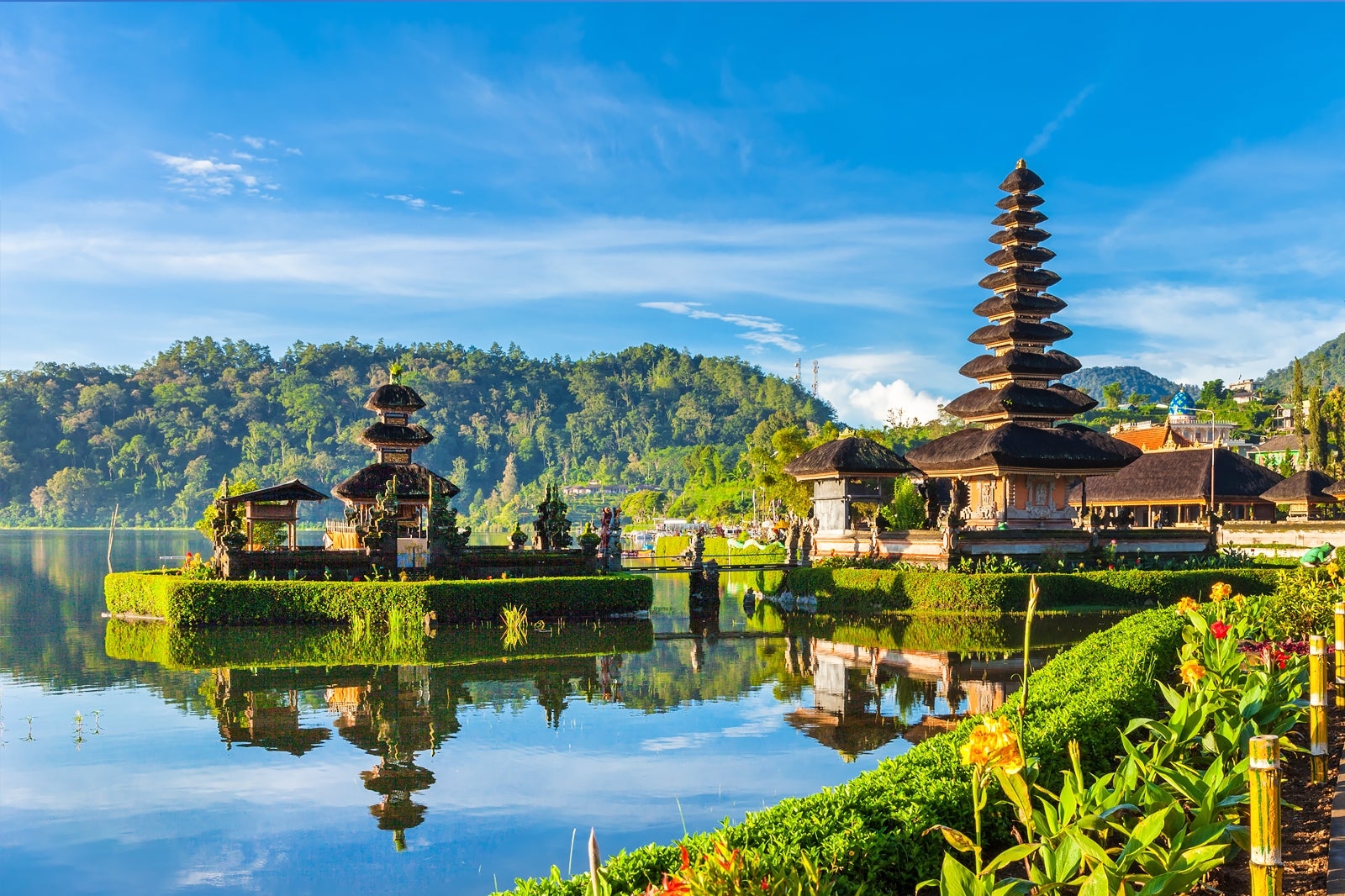 |
| Photo: Hotels |
To live in Bali you need to be able to cover at least average monthly costs on the island which are between $1,000 for singles or $1,500 for couples. It includes:
- 1 bedroom villa $400 a month
- 2 bedroom villa about 10 mins out of tourist spots – $700 USD
- Electricity $50 a month
- Internet $40 a month
- Phone $30 a month
- Motorbike $50 a month
- Food is $10 a day to eat comfortably – but you can survive on $5 and eat very well on $20 a day.
- Visa costs – $150 a month (if needed)
Total: $720 basics plus $300 on food = $1,020 or $1,320 when renting a two bedroom villa.
You don’t need a large budget to live in Bali. Digital nomads, remote workers, expats, and even retirees can live a very comfortable life at about $1,000 – $1,500 per month.
Nevertheless, expats should keep in mind that Bali is the major holiday destination and tends to be more expensive than other parts of Indonesia. Moreover, Canggu is the most expensive area after Seminyak.
Housing
The price range varies depending on the location, Seminyak and Canggu have the highest prices on rentals. The cost difference between different areas can be several times. Overall rent can range between $270 for a room in a guesthouse/shared villa or $1,300 for a private villa.
Bills
Bills are low in Bali. Utilities are often included in the rental price and the internet might cost you an additional $20-$30.
Food
The price of food in Bali can vary dramatically. You could eat like a local in cheaper warungs where meals cost just between $1,50 and $3.
For that price, you can enjoy a tasty local meal of fried noodles/rice with vegetables/chicken/seafood, Gado Gado (vegetables & egg in peanut sauce), Nasi Campur (rice with a selection of local dishes), fried chicken & rice or a local creamy curry.
On another hand, you can also eat at touristy places and pay in times more.
Generally, you can find different warungs with different levels of pricing:
- Very local warung (Good Indonesian food) – 10,000 to 20,000 ($1 – $1,4)
- Cheap-level warung (Good Indonesian food and average western food) – 20,000 to 40,000 ($1,4 – $2,8)
- Mid-level warung (Good Indonesian food and good western food) – 40,000 to 60,000 ($2,8 – $4,2)
- High-level warung – (Fancy Indonesian food and fancy western food) 60,000 plus ($4,2+)
Grocery and supermarket prices also tend to vary depending on where exactly you are – areas with foreigners tend to be more costly. The local produce is generally more affordable than imported goods, which can be far more expensive than in Europe and the US.
Restaurants and western food will cost you more. A Western meal for two can cost from 120,000 IDR to 300,000 IDR ($8-$21) including one or two dishes and a fresh juice. Juices and smoothies cost from 15,000-35,000 IDR ($1-$2,50).
Here’s some prices for food you can find:
- 15,000 IDR ($1.07) for jukut arab (a Balinese vegetable salad) at Warung Bintangbali
- 29,000 IDR ($2.07) for nasi campur (red rice and seven vegetable, tofu, and tempeh dishes) at Wulan Vegetarian Warung
- 42,000 IDR ($3) for tempeh coconut noodle curry at Melting Wok
- 47,000 IDR ($3.35) for a salad bar with four toppings at Alchemy
- 55,000 IDR ($3.92) for vegan tempeh tacos at Sage
- 55,000 IDR ($3.92) for raw Mexican lasagna at Seeds of Life
- 58,000 IDR ($4.14) for 8 layer veggie burrito at Taco Casa
Since the water in Bali isn’t drinkable, you will need to buy your own. That will set you back for another $0,9 for a 1500ml bottle.
Drinking in Bali
Drinking alcohol in Bali can become quite expensive. The local beer Bintang is the cheapest bet and costs $1,50 in a supermarket and $2 – $3 in a bar or restaurant. Imported beer or cider may cost twice as much and wine is very expensive too – the imported bottle of average Australian wine will start at $20.
Furthermore, the price of one cocktail can be the equivalent of 3 meals at a Balinese Warung.
Transport
In Bali, there is almost no public transportation and you probably don’t want to use it either. You will need to have your own vehicle or rent a motorbike. If you intend to stay long-term in Bali, it’s better to buy your own bike.
The cost of having a motorbike includes petrol, a helmet, daily parking costs – depending on where you go. Keep in mind if the police stop you and you don’t have a license, you will need to pay a fine in cash.
General transportation costs in Bali:
- Motorbike 1-day hire – 50,000 ($3,5)
- Motorbike 1-week hire – 300,000 ($21)
- Motorbike 1-month hire – 600,000 ($42)
- Petrol (full tank) – 20,000 ($1,4)
- Car Taxi (15 minutes) – 50,000 ($3,5)
- Bike Taxi (15 minutes) – 30,000 ($2,1)
Other expenses while living in Bali
- Laundry. There are many laundries in Ubud. On average you will pay around 25,000 IDR ($1,78) for one wash.
- Cleaning. The cleaner costs 50,000 IDR ($3,57) for two hours.
- Mobile. Internet for your phone will cost around 80,000 IDR ($5,70) for 2GB of data.
- Haircut – around 75,000 IDR for men ($5,36).
4. Manchester
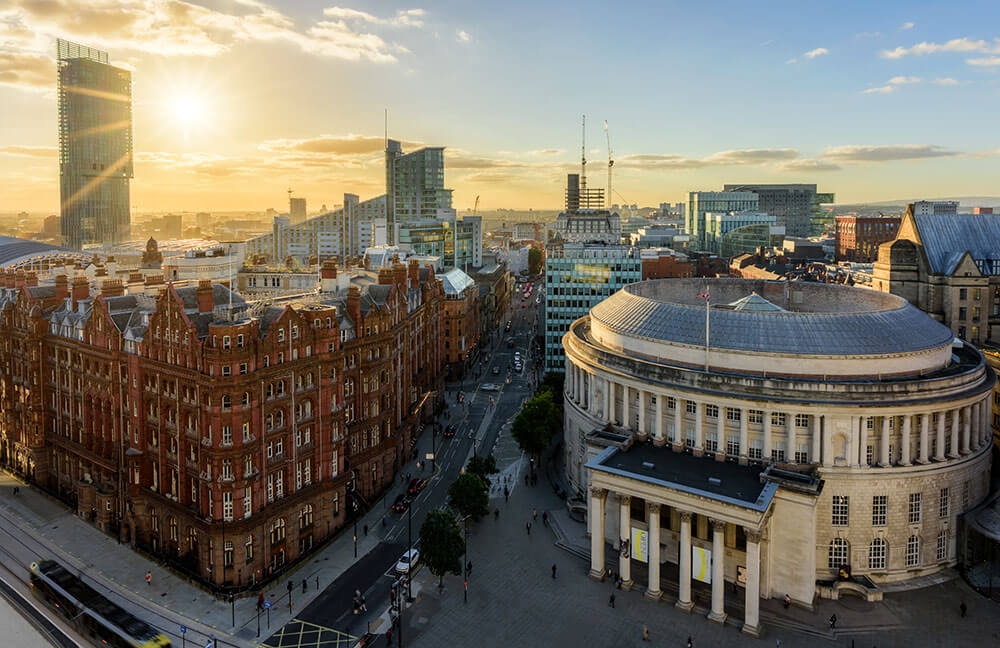 |
| Photo: PCMA |
The UK isn’t exactly known for being cheap. But if you’re crunching the affordability numbers for septered isle cities, Manchester is arguably the cheapest.
The northwest UK city was ranked the least expensive metro to currently live in on the globe by Time Out, which surveyed 27,000 readers for its Time Out Index earlier this year.
According to 90 percent of survey respondents, things don’t “cost a lot” in Manchester, despite it offering a diverse restaurant scene and plenty of transit and culture options.
“The city is also home to museums and galleries, such as the Manchester Art Gallery (free entry), the Science and Industry Museum (also free), the Football Museum (paid), and the People’s History Museum (free),” wrote 14-year resident Zesha Saleem for Insider, adding that the average Manchester one-bedroom apartment costs a little under a $1,000 a month to rent.
Housing prices in Manchester and cheaper than London but tend to be higher than other cities in the UK. Prices obviously vary from area to area but the figures below will give you an indication of what’s available at what price.
Monthly Rental Prices in Manchester
- 1 bedroom flat (apartment) in City Centre: £500+
- 1 bedroom flat outside the City Centre: £400+
- 3 bedroom flat in City Centre: £850+
- 3 bedroom flat outside the City Centre: £600+
Manchester Home Purchase Prices
- Price per square metre (10.7 square feet) to buy in City Centre: £2,175+
- Price per square metre (10.7 square feet) to buy outside City: £317+
Manchester Housing Cost Comparison
This is how rents in Manchester compare with other cities around the globe.
London is 20.67% more expensive
New York is 265.74% more expensive
Los Angeles is 144.23% more expensive
Toronto is 44.66% more expensive
Sydney is 137.25% more expensive
Paris is 55.82% more expensive
Dubai is 167.47% more expensive
Source: Numbeo
Manchester is served by an excellent public transport system of buses, trains and trams. In the city centre, the Metro Shuttle Bus is a free hop-on, hop-off service which links the main railway stations, shopping centres and business districts.
Bus services run across the whole of Greater Manchester – buses.
The Metrolink tram service links all the major centres and are so frequent, there is no need for a timetable. The trains take you to other major cities and suburbs of Manchester.
There are even water taxis which will take you from the city centre to places like Old Trafford.
Here are some example ticket costs.
- Adult Single – £2.60
- One day ticket for bus, tram and train – £8.50
- Monthly season ticket for bus, tram and train – £54
- Yearly season ticket for bus, tram and train – £500
Cost of Clothing, Personal Items, Gym and Leisure
Manchester’s hottest month is July, where the average temperature is 16°C. The coldest month is January with an average temperature of 4°C. October is the wettest month with an average of 90mm of rain.
Like most places in the UK, rain is always a possibility, so it’s wise to carry an umbrella or a fold up waterproof jacket.
Here are some clothing prices, together with other useful prices.
- Pair of Jeans: £30 – £70
- Summer Dress: £19 – £40
- Running Shoes (Trainers): £45 – £80
- Business Shoes: £35 – £65
- Short Doctor’s visit (15 mins): £97
- Deodorant: £1.75
- Shampoo: £2.50
- Toilet Paper (4 rolls): £1.64
- Gym membership: £17 – £45 per month
- Movie (cinema) ticket: £7.50 – £10.50
Source: Numbeo and Expatistan.com
Taxes in Manchester
No matter where you live in the England, you will pay the same rate of income and sales tax. To learn more about the different taxes – income, self-employment, business, capital gains etc, have a look at our moving to the United Kingdom guide.
Sales Tax, or VAT (Value Added Tax) is 20% in the UK and is added to most goods and services throughout the country. Unlike some countries, it is always included in the marked price.
Whether you own or rent your home, you will be subject to council tax based on the area in which you live and the size of the property you live in. Learn more about council tax in Manchester at Manchester Council Tax.
Finally, if you decide to buy a flat or house in Manchester you’ll have to pay stamp duty. While there’s no tax on the first £125,000 of your home value, the marginal rate increases to 12% on a value of over £1.5 million.
Related: Top 10 Cheapest Cities To Live and Visit In America - Healthy Lifestyle & Best Weather
5. Wichita
 |
| Photo: Village Travel |
When it comes to living in Wichita, one of the benefits often discussed is an affordable cost of living compared to other metropolitan areas across the U.S. Addressing concerns about increased living costs, a group with Move.org dug into data and ranked the 74 most populated cities from highest to lowest in living costs. In that ranking, Wichita ranks last, which is a positive for the city.
The data shows Wichita with the lowest cost of living in the U.S., edging Cincinnati, Tulsa, St. Louis and Memphis in the top five. Wichita’s monthly cost of loving at $1,219 with a median individual yearly income at $30,563 and median household income of $55,056.
Move.org found that seven of the 10 U.S. cities with the highest living costs are in California, including the top three. Irvine tops the list with a monthly living cost of $3,062. San Jose and San Francisco follow with monthly living costs around $2,800.
Honolulu and Seattle round out the top five, followed by Oakland, Calif., San Diego, Boston, Anaheim, Calif. and Santa Ana, Calif.
For most affordable cities, El Paso, Texas, Louisville, Ky. Indianapolis, Oklahoma City and Tucson, Ariz. round out the top 10.
To compile its rankings, Move.org said it analyzed living costs in the 74 most populous cities in the U.S. and sourced population numbers from the U.S. Census.
“To get a complete picture of each city’s living costs, we recorded how much rent, food, gas, and utilities5 cost on average in every city,” the researchers explained.”
Researchers didn’t factor median individual income or household income into the rankings but included them for easy comparison.
The Greater Wichita Partnership’s Choose Wichita Initiative lists the city’s cost of living among the Wichita regions top strengths for talent attraction. Other strengths listed include:
- Cost of living
- Housing diversity and affordability
- Presence of major companies
- Our status as the “Air Capital of the World”
- Short commute times
- Entrepreneurial history and spirit
- Higher education institutions
The Choose Wichita Initiative compares Wichita home prices, average rent and annual commute times to other cities. The data shows Wichita with the lowest average home prices and lowest average costs for rent compared to Kansas City, Oklahoma City, Dallas and Los Angeles.
6. Cambodia
 |
| Photo: Encyclopedia Britannica |
For many expats it is the sheer convenience, high quality, and low cost of things, such as getting your clothes made for you by one of the many tailor shops in the main cities and towns of Cambodia. You simply select from a range of fabrics, pick out the style of cut that you prefer, and then one week later you get a new shirt and pair of pants, tailored to your precise measurements, for as little as $30. It is also possible to have one of the local shoemakers take a pair of your favorite dress shoes and make a near-perfect imitation of them for around $35.
There is also a reasonable tax regime on imported goods, which is appreciated for those seeking creature comforts from the Western world, as costs are low for American ice cream, French wine, Australian meats, and many other items that can be found aplenty in the supermarkets and minimarts in any areas with large expat populations. This also means that regular grocery shopping can be quite inexpensive, and the bigger cities in Cambodia all have Western-style shopping chains and malls that offer everything you could possibly need, from fresh produce to organic fruits and vegetables.
Fine dining at a fair price is something that is often taken for granted, especially in Phnom Penh and Siem Reap, where there are hundreds of restaurants of every nationality to choose from. Everything from French to Italian, American to British, and all types of Asian cuisines (including, of course, Khmer) are on offer here from $5 per course upwards.
The low cost of socializing is another element that makes expat life so attractive, with many bars and restaurants selling fresh draft beer at 50 cents for a glass, and with excellent European and Australian wines available at a snip of the cost compared to their import prices in the U.S. Spirits are also no exception to this low cost bonanza, making happy hour a must-do for any expats seeking a cocktail at sunset.
When it comes to rentals, the quality and range of what is available in cities like Phnom Penh can be jaw-dropping, with expensive penthouse condos going for thousands of dollars a month. But for most people, the selection of Western-style apartments and Khmer townhouses remains extremely affordable, starting at just a few hundred dollars a month.
Utilities are even more affordable with electricity varying between $80 to $100 a month, paid cable television at just $5, water from $5 to $10, and garbage collection at $2 per household, with the cost of having a cleaner come to your house each week setting you back $30 to $40 a month.
A local call on your cell phone will cost about 5 cents a minute (although many providers offer hundreds of free minutes each month), while international calls to the U.S. are between 5 to 7 cents a minute.
It should be no surprise that mobile data charges are also one of the lowest in the region, with 1GB of internet use costing around $1 (depending on your operator). This leads to many expats relying on their smartphone to connect to the internet, although those who need an unlimited connection pay just $20 a month for home WiFi connection from one of many reputable service providers.
So while the cost of living in Cambodia may be one of the lowest in the world, the quality and standard of living remain extremely high, leading to more retirees and expats choosing to make this country their home each year.
Here’s an example of a monthly budget for a single expat living in Phnom Penh:
| Expense | U.S. $ |
| Rent: (furnished two-bedroom apartment) | $381 |
| High-speed internet | $19 |
| Pay TV (standard package) | $5 |
| Electricity (including regular A/C) | $92 |
| Phone (basic mobile phone and data plan) | $10 |
| Water | $6 |
| Groceries/wine/beer | $229 |
| Entertainment (dining out and other activities) | $191 |
| House cleaner (once a week) | $31 |
| Healthcare (four $27 visits to a doctor/dentist per year) | $9 |
| Emergency insurance | $65 |
| Visa maintenance | $24 |
| Transportation (regular tuk tuks) | $38 |
| Incidentals | $50 |
| Monthly Total | $1,150 |
7. Portugal
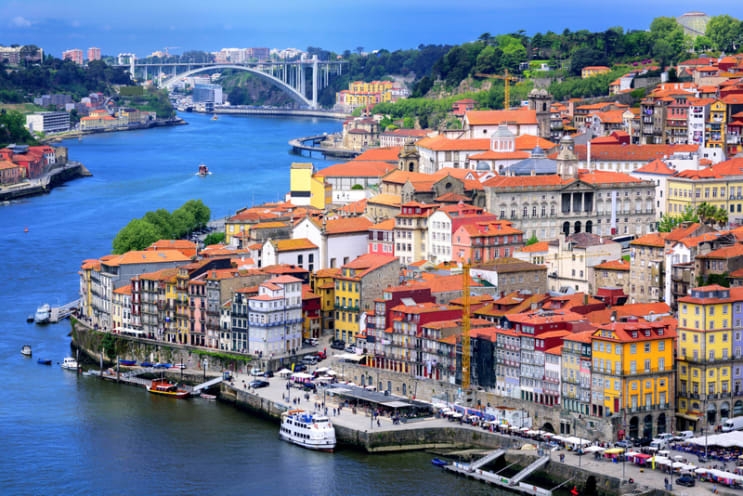 |
| Photo: MasterStudies |
Portugal’s low cost of living is one of the main attractions for expats, but if you really want to live life on a budget, there are various things you can do to make your existence even cheaper.
It’s possible to enjoy a very pleasant existence in Portugal without spending a huge amount of money, but there are still some ways to drain your cash reserves if you’re not careful. In this article, we provide five useful tips to help you either economise, or avoid spending money you don’t have to.
1. Learn your shopping options
Shopping in Portugal is something of a minefield, with price inconsistencies that often seem to make no sense at all. Some items vary in price hugely from supermarket chain to supermarket chain, some small stores sell certain items more cheaply than the supermarkets, and some (but not all) items cost far less at local markets.
The key is the learn all of these intricacies and plan around them. In the UK you may be able to reduce your shopping bill simply by choosing a specific supermarket chain – in Portugal it’s far more a case of learning what’s cheap where.
2. Work out how to heat and cool your home efficiently
When people move to Portugal from colder climes, it can be a surprise to find that electric bills can go up in the summer due to the cost of air conditioning. Then, an absence of central heating in the winter can also cost a huge amount when people switch to plug-in heaters in a desperate attempt to warm those marble-tiled floors!
The way to save money here is to learn your property; Find out where the sun shines throughout the day, the way the draughts work, and what kind of heating is most economical for you in the winter. Simple things like closing curtains at certain times to prevent rooms turning into a greenhouse, and creating a through-breeze to reduce reliance on air conditioning can all be big money savers.
3. Step away from the tourist trail
The sure fire way to burn through cash in Portugal is to go where the tourists go. We’re talking places like beachfront restaurants, and pavement cafés in Central Lisbon.
Of course, there will be times when you want to visit these places and indulge yourself, but if you want to save money you should act like a local and choose more “local” places. You’ll probably enjoy better service and food too! Save the “tourist bit” for when guests visit, and they might even pay as well!
4. Avoid the tolls – or use public transport
Portugal’s network of toll roads is of a very high quality, but they’re not cheap to use. Choosing the tolled A2 from the Algarve to Lisbon will save you stress and time, but will add over €40 to the cost of a return journey. The free road may not be such a pleasant driving experience, but will save you that sum.
Or, using the same journey as an example, consider taking the train. It’s not the fastest journey, but with an advance booking you can get a first class return for less money than you’ll spend in petrol – and that’s before you’ve even thought about Lisbon parking.
5. Become part of the community!
The Portuguese are great at sharing, and it’s great to join in. A gift of a cake or a pie sent to your Portuguese neighbours will likely be followed up by a huge bag of oranges or figs, starting a cycle of reciprocation that’s benefits all concerned and contributes to a real community feel.
At times, once you’ve lived in Portugal for a while, it feels like you never leave home without a plate or bowl to return to a neighbour for some reason! It’s a wonderful, old fashioned part of life, which really contributes to the soul of the country.
8. Malaysia
 |
| Photo: Getty Images |
As with all countries, the cost of living depends on where you decide to live. The most expensive (and largest) city is Kuala Lumpur. While there are cheaper places to live, most expats choose to live in the city of Kuala Lumpur or on Penang Island.
Though prices have increased over the past few years, Kuala Lumpur is currently ranked as the 188th most expensive city. That makes it far more affordable than most. In general, the cost of living is 42.72% lower than living in the U.S.
Housing Costs for Expats in Malaysia
Though Kuala Lumpur is the most expensive city in the country, housing is extremely affordable compared to North America. It costs about 72% less to rent in Kuala Lumpur than it does to rent or own a home in the United States.
A furnished 900 square foot apartment in an expensive neighborhood costs about $764 per month. In a less expensive area, you can pay as little as $443 per month.
Need more space? A three-bedroom apartment in the center of the city will run you approximately $1,030 per month. For two people for one month, utilities (such as gas, heat, electricity) cost about $50. As we said above, these prices are less than one-third of what you would pay for an average apartment in the U.S.
Expats who don’t like city living usually opt to live in Penang instead. In the island town of Penang, a three-bedroom apartment costs about $560 per month.
Healthcare Costs for Foreigners in Malaysia
Malaysia has a public healthcare system, but most expats choose to take out private insurance and see doctors in private clinics. For more information, check out this detailed guide to healthcare in Malaysia.
A short visit to a doctor in Kuala Lumpur or Penang costs about $15. A box of antibiotics typically costs between $5.50 and $7.00, depending on where you make the purchase. A week’s worth of cold medicine, such as Tylenol, will run you about $4.13 in Kuala Lumpur and as little as $3.19 in Penang.
Cost of Transportation in Malaysia
Though rent costs more in Kuala Lumpur than in Penang, transportation costs tend to be higher on the island. A 5-mile taxi trip in Penang costs about $8 – that same ride in Kuala Lumpur will only set you back about $5.
Monthly transportation tickets for public transit range from $27 – $30, while a liter of gas costs just $0.55.
For expats who want to buy a new car, you can expect to pay considerably more than you would in the United States. For example, a Volkswagen Golf 1.4 TSI costs about $36,000 in Malaysia. In the United States, that same car costs about $22,000.
Vehicle costs are high, and traffic can be overwhelming. Those factors make public transportation the preferred method of travel for most expats.
Food and Entertainment Costs in Malaysia
When comparing food and entertainment costs throughout Malaysia, you’ll find that prices don’t vary all that much. From the city of Kuala Lumpur to the island town of Penang, food and entertainment prices are about the same. Generally speaking, Penang prices tend to come in at about 10% less than prices in the city.
Heading out for a basic lunchtime meal in a business district? You’ll pay about $4.42. Having a craving for a combo meal from a fast-food restaurant? Most combo meals cost about $3.41.
If you like to relax and have a beer at the end of a long workday, you can expect to pay $2.90 for a bottle of domestic beer purchased in a supermarket. For those who prefer to drink in a neighborhood pub, a pint of beer will cost you about $5. A cocktail in a downtown club will set you back about $8.
When it comes time for dinner, two people can enjoy dinner in an expat neighborhood for about $36. Dinner for two in a neighborhood pub will only set you back about $18. The country is also filled with street food vendors, where you can easily enjoy a great local meal for under $4.
As for entertainment, two movie tickets will only set you back about $9 (which is about what you would pay for one ticket in the United States). And if the theater is your thing, two great seats will only cost you $41 for a pair.
For expats who want to maintain their health and fitness at the gym, you can expect to pay about $35 for a monthly health club membership for one adult.
Summary of the Cost of Living in Malaysia
Even if you choose to live in its most expensive city, the cost of living in Malaysia is very low. This makes it a great destination for many expats – especially retirees looking to keep their expenses to a minimum.
Housing costs are quite low (about 72% less than the U.S.), while the overall cost of living is about 43% less expensive. For retirees looking to stretch their savings, Malaysia is a destination worth considering.
From city life to island living, you can enjoy it all in Malaysia. The people are friendly, the weather is warm, and the beaches are beautiful. And, perhaps most importantly, it will cost you a whole lot less to live there than it will to live in the U.S., Europe, or other Asian countries.
9. Costa Rica
 |
| Photo: Shutterstock |
A single person can live on between $1,600 and $2,000 a month. Some single people scrape by on considerably less, and others spend hundreds of dollars more, depending on their lifestyle. Some retired couples live well on $2,000 per month and even better on $2,500 to $3,000. That includes all costs, including housing, transportation, medical care, utilities, food, and entertainment. Real estate, whether you rent or buy, is more affordable in Costa Rica, with North American-style homes in great locations reasonably priced, comparatively.
Medical care is high quality and low cost, with legal resident expats enjoying use of the government-run universal healthcare system known as Caja. For a low monthly fee based on income, you get doctor’s visits, prescriptions, surgeries…any care you need…for free. Private clinics and hospitals are also a fraction of the price if you pay cash—and insurance is available, too.
When it comes to food, it pays to shop and eat out like a local. The feria, or weekly open-air farmers’ market, is an institution in just about every Costa Rican town or village. This is where the locals come to stock up on fresh fruit, vegetables, and spices. You’ll also find farm-fresh fruits and vegetables, seafood, beef and chicken, eggs, dairy products, bread, coffee, and more. Prices are low…$1.50 pineapples…a pound of red snapper for $10…a head of lettuce for 50 cents…fistfuls of herbs like basil for 25 cents—shopping there a couple can fill their fridge for about $40 to $50 per week. Plus, going to the feria is fun too, with the vendors offering free samples and calling out deals all surrounded by tables piled high with produce.
Keep in mind that many beach destinations that are popular with tourists will have a higher cost of living because prices for rentals, dinners out, and grocery stores tend to be more expensive. And you will use air conditioning, which drives up your electric bill. Still, wherever you are in Costa Rica, there are many ways to save.
Monthly Budget Breakdown for a Couple in Costa Rica
| Expense | U.S. $ |
| Housing (rental of a furnished, two-bedroom apartment) | $800 |
| Electricity (varies widely with A/C usage) | $50 |
| Water | $10 |
| Fuel Costs (you will not need to heat your home in CR) | $0 |
| Garbage/trash pick-up (typically included in rent) | $0 |
| Household help (maid 1x week) | $40 |
| Internet | $40 |
| Cell phones (x2 one plan, one pre-pay) | $30 |
| Cable | $60 |
| Healthcare (four $50 visits to a doctor per year for two people + monthly Caja payment) | $150 |
| Transportation (owning a car) | $130 |
| Food/groceries (including alcohol) | $400 |
| Clothing | $50 |
| Entertainment (two people dining out eight times a month at local restaurants or other entertainment, such as movies, concerts) | $250 |
| Taxes (included in rental rates) | $0 |
| Misc. (unexpected expenses) | $100 |
| Landline (not necessary) | $0 |
| Monthly total | $2,110 |
10. Ecuador
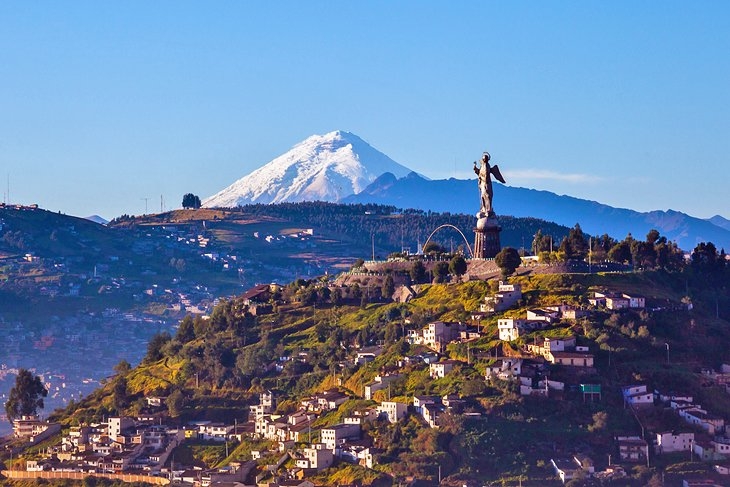 |
| Photo: PlanetWare |
In Ecuador, not only can you retire on little money, you can also live very well. A couple can retire on less than $18,000 per year, and this figure is based on a comfortable lifestyle. Many foreign residents take advantage of this low cost of living to have their main home in the city, and also own a country home, a beach property, or even property in another country…a feat that would be impossible on a comparable budget in the U.S.
Nestled in the Ecuadorian highlands and with a population of just under a half million, the vibrant colonial city of Cuenca is located in a picturesque valley at about 8,200 feet above sea level. Cuenca’s climate, pace of life and peppering of colonial buildings has made it popular with tourists and expats alike. Then, of course, there’s the cost of living. You get big-city amenities without the inflated costs associated with big-city life. You can rent a luxury three-bedroom apartment, have a weekly maid service, cover the cost of running a car, and regularly eat out at a fancy restaurant for $1,700 a month.
Even in the Ecuadorian capital of Quito, a stunning city which just drips with Spanish colonial history, you can live well on a modest budget. Quito is home to some of the most exclusive addresses in Ecuador, yet a pampered lifestyle—with maid, healthcare, plenty of entertainment and dining out, and a luxury two-bedroom apartment rental—will come in at around $1,800 per month for a couple.
Vilcabamba is a small rural town in a secluded mountain basin in southern Ecuador known as a ‘Valley of Longevity’ thanks to the tendency of its inhabitants to live beyond 100. A couple can rent a two-bedroom country home, have a maid visit once a week, regularly go shopping for new clothes, and eat out at restaurants all for less than $1,500 a month (including healthcare).
Additionally, the low cost of living in Ecuador allows retirees to increase their travel, take up new hobbies, and generally enjoy a better quality of life. Ecuador offers something for everyone, and at prices unheard of in North America and Europe.
If you are 65 or older it gets even better. Members of Tercera Edad, which means “Third Age” in Spanish (a much better term than “senior citizen,” don’t you think?) enjoy many special benefits in Ecuador. Like discounted airfare on flights originating in the country—half-price public transportation and admission to sporting and cultural events—half-price utilities and a free land line if you own your home. Plus you are eligible for a refund on what you spend for your monthly IVA tax on all purchases. You even have your own line at the bank and grocery store.
Here is a sample budget for a couple living well in the city of Cuenca. The expenses are, of course, approximate. We’ve erred on the side of extra spending to come up with a budget that allows for a pretty luxurious lifestyle…for barely more than $20,000 a year for two people.
Sample monthly budget for a couple living in Cuenca:
| Expense | U.S.$ |
| Housing (rental of a luxury three-bedroom, unfurnished apartment) | $500 |
| Utilities (including phone, water/electricity, internet, and DirecTV) | $155 |
| Maid (once a week) | $75 |
| Groceries (not including alcohol) | $450 |
| Maintenance and fuel for one car | $140 |
| Misc. (personal items, etc.) | $100 |
| Entertainment (two people dining out six times a month with drinks, dessert, and tips) | $200 |
| IESS (social security) healthcare | $80 |
| Monthly total: | $1,700 |
| Yearly total: | $20,400 |
Sample monthly budget for a single person living in Cuenca:
| Expense | U.S.$ |
| Housing (rental of a luxury two-bedroom, unfurnished apartment) | $400 |
| Utilities (including phone, water/electricity, internet and DirecTV) | $155 |
| Maid (once a week) | $80 |
| Groceries (not including alcohol) | $400 |
| Maintenance and fuel for one car (optional expense) | $140 |
| Misc. (personal items, etc.) | $80 |
| Entertainment (one person dining out six times a month with drinks, dessert, and tips) | $120 |
| IESS (social security) healthcare | $65 |
| Monthly total: | $1,440 |
| Yearly total: | $17,280 |
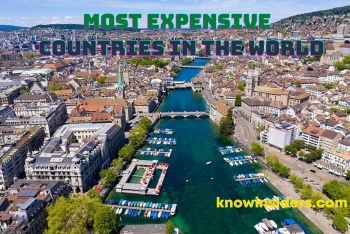 Top 20 Most Expensive Countries & Territories In The World to Live in 2022 Top 20 Most Expensive Countries & Territories In The World to Live in 2022 The ranking of the Most Expensive Countries and Territories (or Cost of Living Index by Country 2022) in the world to live in 2022 has ... |
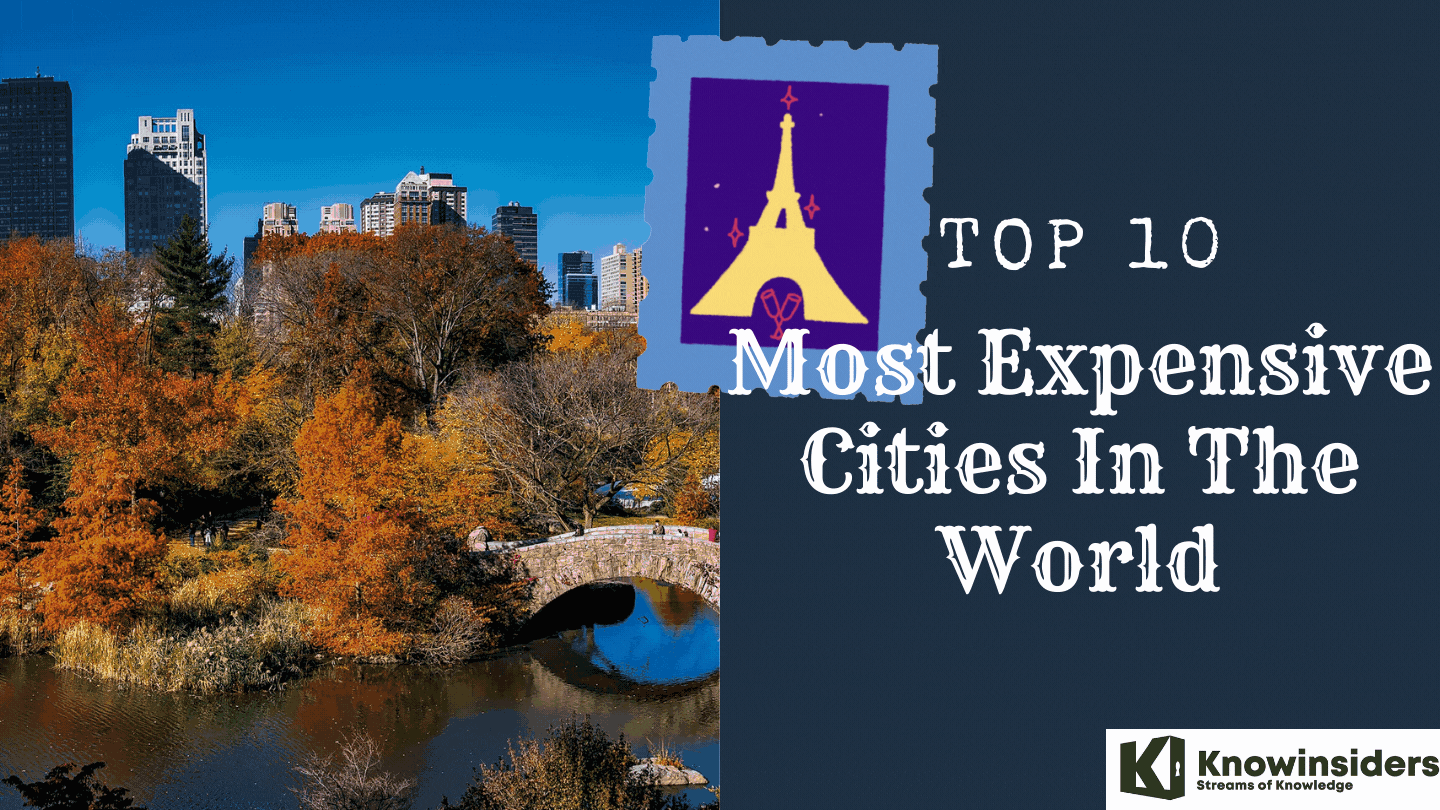 10 Most Expensive Cities To Live In The World 10 Most Expensive Cities To Live In The World Luxury life in a glorious, expensive city is a dream, and if money is not a problem for you, then these cities in the world ... |
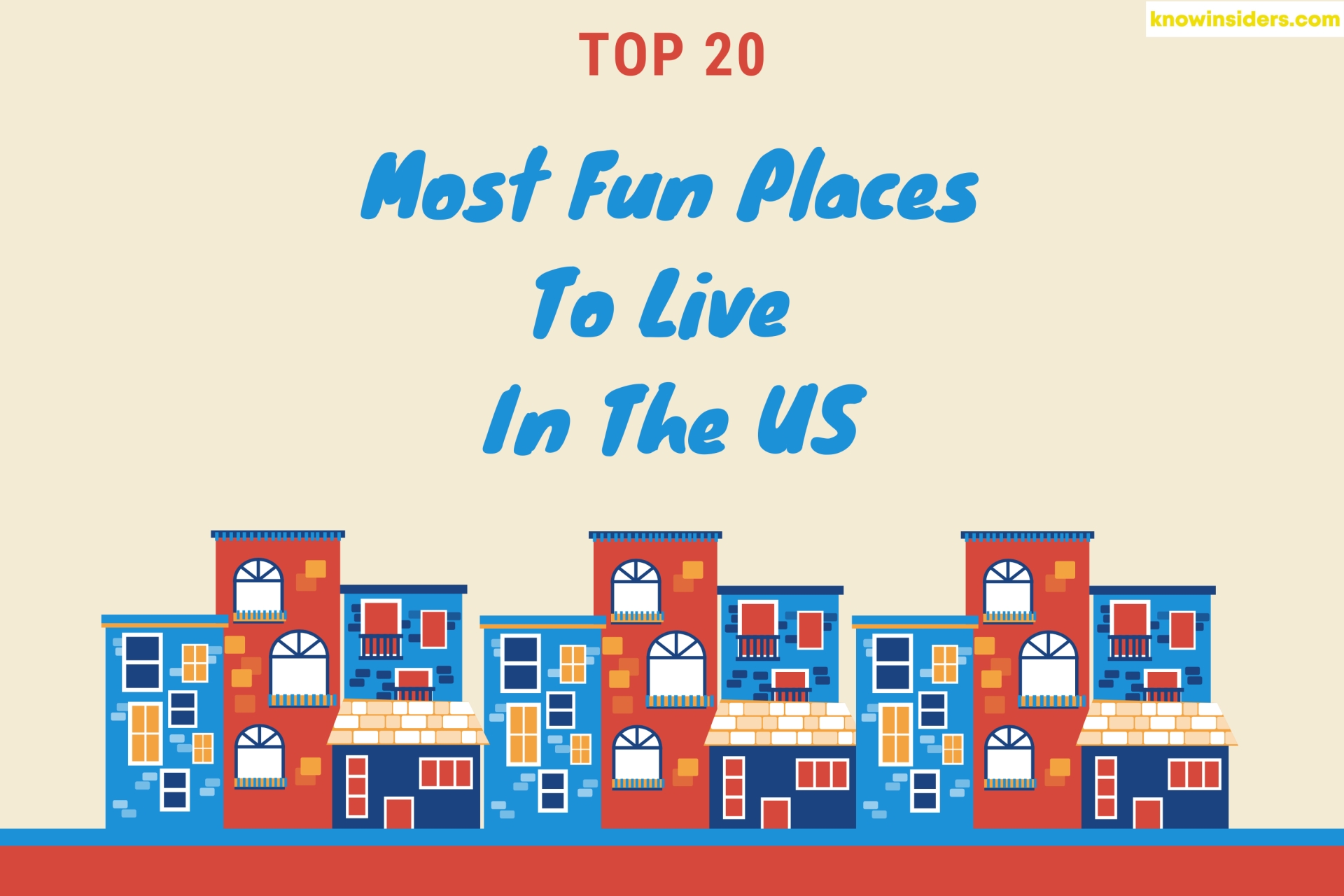 Top 20 Most Fun Places To Live In The US Top 20 Most Fun Places To Live In The US You are a party lover and finding a fun place to live in the US, aren't you? Check out the list of top 20 most ... |


























